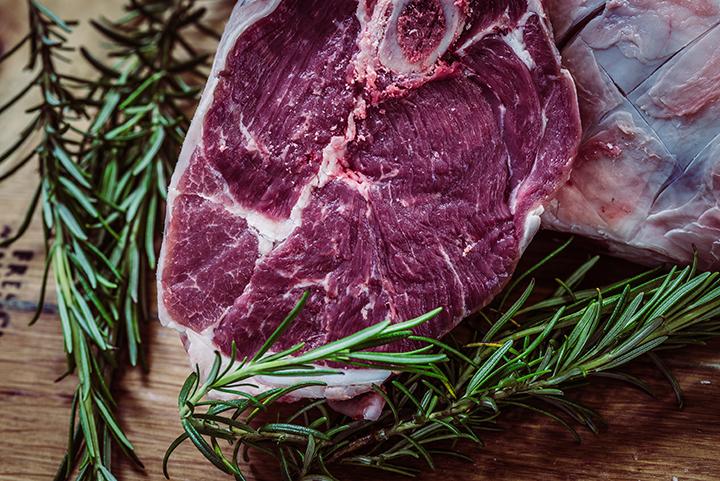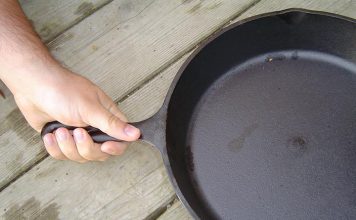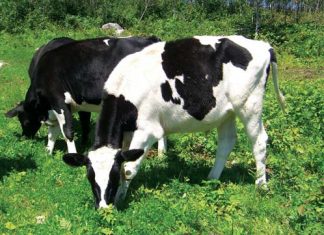 |
|
| Issue #111 • May/June, 2008 |
It goes without saying that preparedness is not for “radicals” or “weirdos” anymore. I picked up a preparedness leaflet at the County Agent’s office last week and another one at our bank. Times are changing. For the better. In the past, a lot of people equated the term “emergency preparedness” with nuclear bombs going off, tornadoes leveling the neighborhood, etc. But, in truth, most of our emergencies are rather bland by comparison. However, at the time, they sure feel like emergencies to us. How about when you went to work and were told that there was no work and maybe, just maybe, the plant would reopen in a couple of months? Or when the paycheck wasn’t in the mail and you had to wait two months for it to be reissued? Or when your daughter left her husband and came home with her two kids? Or the country goes into (another) recession and food prices go sky-high, along with everything else. To some, small emergencies, but to those affected, they are huge.
The good news is that there’s a lot we can do to be prepared. Yes, we all have cans of food in our pantries, lots of dried beans, rice, cornmeal, and flour stored away. But a lot of folks miss the important cornerstone of a tasty, complete diet: protein sources. Yes, we can survive on rice and beans. But that sure as heck gets tiresome after about two days! Here are a few hints on some things we can do to boost our emergency foods up to really good eating that is really good for us, too.
I just found out today that grain prices are rising at an alarming rate. Wheat at $7 a bushel in December is now nearing $17 a bushel. Of course corn’s doing the same…and oats are following. At the mill today, the owner told me that farm fertilizer has risen to $700 a ton. And that all affects the price of grain-eating animals. Right now they’re at nearly an all-time low. Grown sows that have just weaned litters aren’t even getting a bid at the auction barns and grown butcher hogs are selling for $30 a hundredweight. It’s going to get worse as farmers dump their animals because they can’t afford to feed them for what they are bringing. You can’t spend $80 to feed a butcher hog and sell him for $60.
The other side of this coin is that once millions of animals have been sold and butchered, the price of meat is going to skyrocket.
Buy cheap meat
A good plan is to buy inexpensive meat now and home can it for the future. This will give you a good tasting protein source that is also a nice cornerstone for many meals. While you can certainly home can meat in quart jars, I’ve found that it is more economical (unless you have over four to feed) to put it up in pint and even half-pint jars. It uses more jars, but you will get many, many more meals from the same amount of meat. Now when I say “cheap meat,” I don’t mean poor cuts, such as chuck roast, which has a very high percentage of fat, bone, and gristle. I mean lean cuts that you buy on a very good sale. For instance, I’ve picked up boneless, trimmed, whole pork loin for $1.49. You get a lot of good, usable meat from such cuts.
I won’t get into the actual process of canning meat here, for the sake of space, but you can look back in the May/June 2007 (Issue #105) of Backwoods Home Magazine, archived online Ask Jackie, and BHM blogs to gain tons of how-to information on home canning. Of course, meat must be processed with a pressure canner, as it is a low acid food and can be subject to botulism if it is not properly processed.
Pick up “family packs” of boneless, skinless chicken breasts and thighs when they are on a huge sale. I’ve recently picked up thighs for 48¢ a pound and breasts for 99¢. I don’t buy one or two packs; I buy a dozen and can them as fast as they thaw out.

Buy cheap “holiday” meat to can. I buy cheap, good quality hams and pork loin at Easter and turkeys at Thanksgiving and Christmas. Stores often use the meat as a loss-leader to get shoppers into the store. Again, I buy in bulk and can it right away.
Ask your local meat manager if you can buy outdated meat at a very good price. I’ve done this and gotten pounds of hamburger, roasts, ham, and even steaks for pennies on the dollar. They usually freeze any meat that outdates. It’s worth asking.
Buy bulk lean hamburger when it’s on sale. I stay away from “chubs” or the round, long plastic wrapped burger…unless I know it’s packaged locally. Some of that meat is from other countries where their animal raising often includes “peculiar” feeds and spraying barns and animals with DDT. Yes, DDT is banned in the U.S., but we make it and ship it out of the country, then buy produce and meat from those countries. Smart, huh?
Check out your local Dollar Store for canning lids this spring. Those lids are going up all the time, but I just bought a case for 99¢ a box of a dozen regular lids. The name of the game is saving all you can.
Don’t forget to make mixed meat dishes to can, such as spaghetti sauce, pizza sauce with Italian sausage, soups, stews, sloppy joes, chili, etc. They come in very handy at times.
Buy up as much meat from time to time as you are able and can it up, while it’s still cheap. By the looks of things, it’s going to get a whole lot worse before too long.
Okay, I’ve got a pantry well stocked with tasty home canned meats and poultry, but what happens when we eat it up?
Raise your own poultry
I believe firmly that it’s always a good idea to have poultry. Even a small flock of chickens is a great help when times get tough. They can even be kept on the edges of many cities and towns, providing local regulations allow this small “livestock.” A small flock of chickens only needs a coop slightly larger than a large-breed dog house, and a wire run attached to it so they can roam outdoors. Of course, when you have the room available, they can also be allowed to free range during the day, providing they don’t roam into your neighbor’s flower beds or garden.
A flock of six hens will usually produce about four eggs a day on average, year around. They lay fewer eggs during the winter months and usually an egg a day in the spring and early summer. Not only are the fresh eggs a good, nutritious, tasty source of protein for the family, but they are extremely useful in helping to provide a varied menu. After all, eggs can be used in everything from pies (custard & meringue), to breads, and meat binders, like in meatloaf.
And a small flock of chickens can earn their own living by free ranging during the summer and be supplemented by extra kitchen and garden refuse. This makes the cost of raising them much lower than if they were solely fed laying mash.
Chickens are extremely easy to raise for just about anyone, from elderly to children. I won’t get into the “how-to’s” here, again for lack of room, but you can pick up BHM’s new Chickens handbook or read Jan/Feb 2008 (Issue #109) of BHM and learn all about it.
If you have room, raising a batch of meat chickens along with your layers is always a great idea. Why not buy a batch of Cornish Rock roasting chicks this spring so you can butcher and can them up this fall? It takes very little work to raise them and you will reap a tremendous amount of meat from even 25 chicks.
You can even have your own heavy hens sit on their own eggs, hatching out a renewable meat supply at no extra cost to you. When you let four hens sit on only one clutch of eggs a summer, you’ll end up with around forty meat birds come early winter. Not bad. And the hens do all the incubating, brooding, and caretaking too.
Have more room yet? Why not keep a small flock of turkeys? I have three hens and a tom. The hens all lay well, and this spring we’ll be saving their eggs for my friend Jeri to hatch in her incubator. We’ll share the babies and both families will have all the turkey we want to eat. Turkeys are kept almost like chickens, only their nests have to be on the ground; they’re too heavy to fly up to a nest box. It has been said that domestic turkeys are bred so heavy that they can not reproduce without artificial insemination. Not true. Simply use a tom of a medium breed on your larger hens. I have a tom that is crossed with a wild turkey. He is lighter weight and much more nimble than meat toms. Therefore he can breed the hens without tearing up their backs like a heavier tom would. The poults grow nearly as large as the Broad Breasted Bronze hens, so it’s a win-win situation.
Again, with raising your own poultry, it’s always a good idea to keep putting up some of the meat in jars in your pantry for winter or lean times. Stocking up that pantry is an ongoing process if you’re serious about having a reliable, sustainable source of food.
Raise your own rabbits
Another great source of “small meat” that can be raised just about anywhere you live is rabbits. Their housing needs are minimal. They are cheap to feed. And they reproduce…well…like rabbits! (In fairness, though, it does take a little experience to raise rabbits well enough for a dependable meat source.) The meat is tender and delicious.
Having three hutches of breeders, two does and a good buck, you’ll have year-round meat. It only takes two months for a litter of bunnies to grow from tiny babies to large meat rabbits. And a healthy doe can have at least two litters a year; many breeders do three. (I would rather have two as the does don’t get as run down, and thus live a longer reproductive life.)

For large meat rabbit breeds, a cage at least 18”x48” is necessary; larger is better. You’ll need one per breeding doe, one for your buck, and another for growing fryers.
Unless you live in a relatively mild climate, your rabbits are best housed in wood and wire hutches with a wood nesting box. Many large breeders use all wire cages. These are very nice, easy to clean, and provide great ventilation. But when you use all wire cages, you should also have them housed in an outbuilding for protection against rain, wind, snow, cold, sun, and predators. In extremely cold climates, it’s also necessary to bring wood and wire hutches under cover during the winter months. This can be in a barn, garage, or even a smaller shed made of plywood. You just need something for protection against heavy snows, stiff wind, and bitter temperatures.
In warm weather, be sure your rabbits are given some sort of shade. Not only is heat uncomfortable for them but bucks can become sterile if they get too hot. Our rabbits love cuddling a plastic soda bottle, frozen over-night when it’s very hot. That’s good for them, too. You’ll lose no rabbits to heat prostration if you keep them cool.
Rabbits are easily fed. In the summer you can cut grass, clover, alfalfa, and other forage for them, along with giving them extra produce from the garden. In addition, they should also have rabbit pellets, salt, and a clean source of fresh water. During the winter, they will eat good quality hay in place of the grass and other forage; they should also have pellets, salt, and daily fresh water.
Rabbit-raising tip: never put a buck into a doe’s cage. She is very territorial and will fight and even castrate a buck! Always put the doe into the buck’s cage and even then, stay and watch to make sure she doesn’t repel his advances viciously; if she does, take her away and try again another day when she is more receptive.
There are many good rabbit books aimed at beginners and homestead-type rabbit raising. If you’re interested, browse through a couple at your local library. Then hunt up a couple of local rabbit breeders that raise good meat stock. You’ll want large rabbit breeds such as New Zealand Whites, Californians, or Flemish Giants. There are dozens of smaller “pet” breeds that just don’t make efficient meat rabbits, no matter how pretty they are.
How about dairy goats?
In my opinion, few animals exceed the usefulness of a good dairy goat. With two does (the correct term for “nanny”) and a buck…or a relatively nearby breeder with a buck, you will have not only year-round milk but also an ongoing source of meat from any kids you choose not to keep. Let me say right here and now: goat milk does not taste goaty if it is from a healthy doe, fed decent food, kept in clean conditions, and the milk has been handled correctly. You can’t taste the difference between goat milk and cow milk. Period.
A good doe should provide at least three quarts of milk a milking for eight months or more, tapering off toward the end of her lactation. She must be dried off two months before giving birth to give her body a chance to recover from months of milking plus developing fetuses in her uterus. This is why two does are useful. By breeding one to freshen (give birth) in May and another in September, you’ll have a good milk source year around. Does have a gestation period of a little over 5 months.
Goats benefit from having a decent shed as protection from severe weather and predators. And because they are extremely clever about getting out, they do need to be fenced in. The easiest and strongest fence is welded 16′ stock panels. These may be fastened to either wood posts or steel T posts. Goats can not be fenced in with barbed wire, woven wire (field fence), or chicken wire. They are just too good at escaping. And when they do, they’ll eat your flowers, fruit trees, or garden, and probably end up on your porch or the hood of your car. Or your neighbors’. Not a good idea.
|
Our goats have hay available all the time and receive grain twice a day. In the summer, they also get garden extras, fresh cut grass, tree prunings, and clover. We like to take them for a walk often, too. We all enjoy those excursions when the goats gambol and jump for joy, nibble wild raspberries, aspen trees, and bits of grass. It’s all free food, too!
Goats have great personalities and do not deserve the reputation as being mean and butting people. I have never had a mean goat and I’ve had hundreds in my lifetime. Like all animals, if you treat them well, they’ll be nice to be around. When you’re mean to them, they will repay in kind.
Goat milk also makes excellent yogurt, cottage cheese, hard cheeses, and ice cream and this further extends their desirability. All of these products are very easy to learn to make, too. I give my extra goat milk to my poultry to boost their protein intake. I’ve also raised pigs and baby calves on it, eliminating expensive milk replacer. It’s also much better for them than powdered milk replacer; you’ll have much less trouble with scours (calf diarrhea).
Goat meat, or chevon, is tender and has an excellent flavor. I prefer to bone it out when I can or prepare it. Like venison or mutton, the fat and bone can give the meat a strong taste. Some people like it, but I don’t and always bone it so that it is tasty and mild. I have Nubian/Boer cross does and breed them to my Boer buck. The Boer is a very stocky African meat goat. The crossbreds are stockier than a purebred dairy goat and that makes more meat on any goats we choose to butcher. My does also milk about a gallon a milking, so the crossing with the Boer didn’t hurt that ability.
You can find more information about raising goats by reading the Sept/Oct 2005 (Issue #95) and May/June 2004 (Issue #87) of Backwoods Home Magazine. There are also several good goat books around and if you’ll visit a goat breeder or two, you’ll see how enjoyable goats really are.
Livestock feed
With livestock and poultry to feed, there are feed expenses. But it’s amazing how much of their food you can either gather or grow for them without having a farm. Poultry can be let out to forage for much of their spring and summer food. This is called free ranging. They’ll eat bugs, seeds, and greens with abandon. It’s kind of funny watching your hens running with their mouth open, chasing down a flying grasshopper! Not only will this provide much of their feed; it’ll substantially reduce the amount of insects that damage your garden. We also save and feed them nearly all kitchen scraps and even their own crushed, dried egg shells, which provide them with calcium to make their next egg shells nice and hard.
You can pasture your goats for most of their spring, summer, and fall roughage. Just make sure you use a stout fence, reinforced with electric wire to keep them from standing on the wire or leaning through it. Check out the fencing article I did for BHM in Sept/Oct 2002 (Issue #77). If you don’t have enough land for a pasture or money for the fence, you can still “pasture” them by cutting grass and brush and bringing it to their pen. A machete works great to cut brambles and tall grass. Of course, so does a scythe or a string trimmer. We cut around the edges of our driveway, where the browse grows thick. You can also cut on roadsides, providing it has not been sprayed with herbicides for brush control.
|
My son, David, loves to cut the goats poplar saplings to throw in the goat pen. And they love to eat them. They soon eat all the bark and most of the leafy branches.
In some areas, you can visit the bakery thrift stores and get huge deals on over-two-day-old bread. We used to load a whole pickup truck full for $10. We fed this to the chickens, goats, and even cows. Of course we first went through the load and distributed the good stuff to our friends and neighbors, who thoroughly enjoyed “bakery day.”
We save tons by growing extra livestock feed right in our large garden. A few extra rows of sweet corn not only give you more to eat, but we feed all the cobs (after cutting the kernels off to can), husks, and stalks to our happy goats. They also get forked carrots, and carrot tops, beet and other tops, pea pods, bean trimmings and vines when they’re finished bearing, weeds, extra squash and pumpkins, unripe melons in the fall (they love those), raspberry and blackberry prunings, rutabagas, turnips, and more. You’d be surprised at how much goat food you can find growing in your garden.
Even if you don’t have enough garden to grow significant produce for your livestock, why not check out the local stores? Many of them will give you boxes of vegetable trimmings, bruised fruit, and wilted produce for your animals. Of course some only give you a cold stare. But I’ve grown tough enough to keep checking around, especially the smaller stores locally, who don’t have “corporate policy,” to protect the stores from lawsuit should someone become sick from eating throwout produce.
Hunting wild meat
With us, hunting is not a “sport” but a way of keeping our meat pantry full. It’s amazing, but a deer or two will provide dozens of jars of very good meat. If you’re fortunate and live where there are elk or moose available to hunt, you have a huge source of meat…right out in the woods. And best ever, you don’t have to house, feed, or care for it.
Wild meat is even healthier eating as it is lower in fat and cholesterol than beef or pork.
If you don’t hunt now, perhaps this would be a good time to learn. Hunting is an art and it starts by getting to know your weapon and the animals you will be hunting. Whether you choose to hunt with a bow and arrow, black powder rifle, shotgun, or rifle, learn basic safety and practice until you are accurate, under different conditions and distances.
Walk the woods. Learn to track. Learn the ways of your quarryhow to get them to stop, how to entice them to approach closer. You can learn a lot from watching videos and reading, but nothing beats actually walking the woods or mountains where you will be hunting.
|
I have hunted deer, elk, and moose, but I also hunt game birds to supplement our meat supply in season. Don’t discount the smaller game such as birds, squirrels, and rabbits. They are often very abundant and will give you many good meals. There is a nice article about survival hunting in the March/April 2008 (Issue #110) of BHM.
Don’t wait until there is a national crisis to begin to hunt. When times are really tough, everyone is out there hunting and your chances of bagging an animal are severely reduced. During the homestead days, and later, during the Great Depression, game was nearly exterminated in many areas because people had to hunt in order to survive and they killed just about everything edible.
Do be advised that in most states there is a game limit. Say you are allowed one deer. That doesn’t mean one hanging in a tree, it also means one canned in your pantry, or frozen in your freezer. You used to be able to limit out on any game and process the meat. If you had “extra” left or bagged another legal animal, so much the better, because you had leftover food to add to your current supply. Now this is illegal. For instance, we used to fish every day, bring our limit home, clean, and freeze them. Today, in most states, this would be considered illegal as we would have over our limit “in possession.” A lot of laws don’t make any sense to a reasonable person! It’s okay to eat fish every day, but not freeze those same fish? Take care to read your game regulations.
To learn more of the how-tos of home canning your own meat you should pick up a relatively current home canning book or manual, such as the Ball Blue Book, which is available at most stores that carry canning supplies.
Non-meat protein
I’ve always advocated having a supply of TVPs on hand as recipe enhancers and protein additions. TVPs are granulated bits of flavored soy protein. You probably best know the “fake” bacon bits from the store. I use bacon flavored TVPs a lot in everyday cooking. Toss a handful into a casserole, fried potatoes, eggs, or whatever and you’ve got a meal. I even mix them with cream cheese and stuff fresh mushrooms with the mix and bake them. Pretty darned good.
TVPs come in sausage, hamburger, and taco flavor, in addition to bacon. All are pretty good and are available in #10 cans (roughly a gallon) from emergency preparedness companies such as Emergency Essentials. They are dry and remain good as long as you keep them in an airtight container. I have an opened can that has been open for three years and they are still perfect.
Don’t forget to store up beans, lentils, and peas. These versatile (and tasty) sources of protein are also very filling…not to mention good for you too. I store up dry beans, peas, and lentils, but also can some up in pint and quart jars, too, for quick meals. They are already soaked, softened, and ready to add to your recipes. You can make up a batch of your favorite chili in ten minutes by using your home canned beans, tomatoes, and hamburger. That is, of course, unless you’ve already canned up quarts of your best chili, all mixed and ready to heat up.
Dry legumes will keep for years and years, but as time goes by, they take longer to become tender. This is another reason I can up my older stored legumes. When you can them, they do become tender, no matter what their age. It’s a good way to rotate the stored foods.
Stored food rotation
Speaking of rotating your foods, we all know it’s a good idea to use your older foods first, slowly using up those foods so that none get way too old. Even though home canned foods last for decades, with proper storage, it’s still a good idea to rotate your dry foods and home canned foods so that the whole batch stays in good eating condition.
While nearly all canned food stays “edible,” even when it is old, some of it loses color, softens, or becomes otherwise less appetizing than it was when it was first canned. This is more true of some pickles, fruits (especially peaches), potatoes, rutabagas, and cabbage.
I don’t mark dates on my canning lids (which I know I should), but I do make room all the way to the back of my deep shelves for the new canning batches, then row up my older foods in front of them, forcing myself to use them first. (Rotation for dummies.)
I hope all of you will join me in preparing our pantries this spring, stocking them full of nutritious, tasty high protein foods and stocking our yards with small livestock to meet our continuing needs. May all your emergencies be small ones.


















I don’t usually comment on articles that I read but I had to te!l you that I love this article and all that I have read over the years. Thank you so very much for all the great information. Also wanted to mention that you have one of the best canning books available. I believe the name of it is, Growing and Canning Your Own Food, please correct me if that’s not right. I have used mine so much I lost the cover. Thanks again for all the great information.